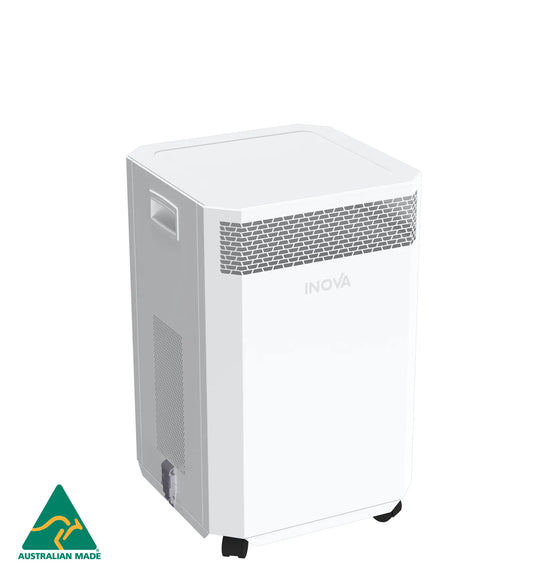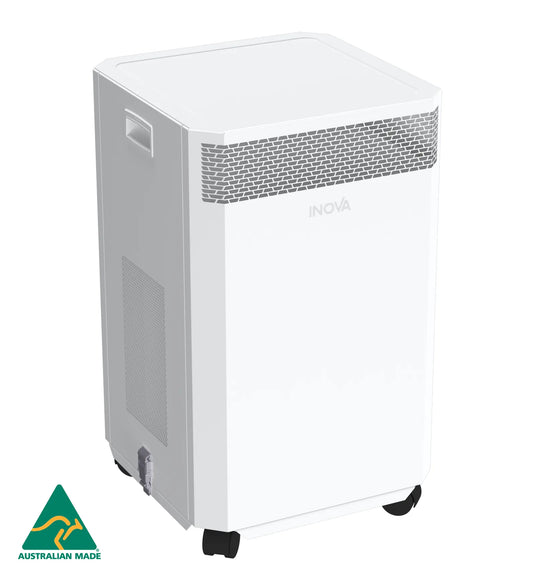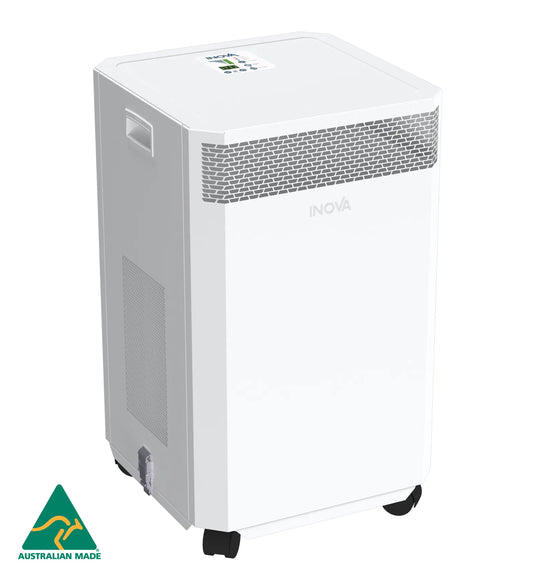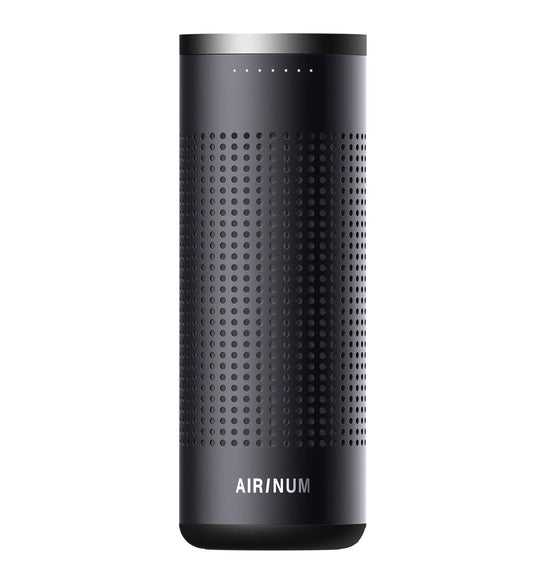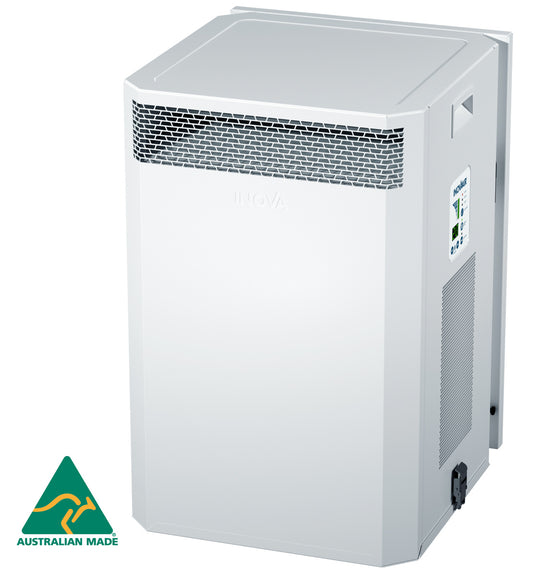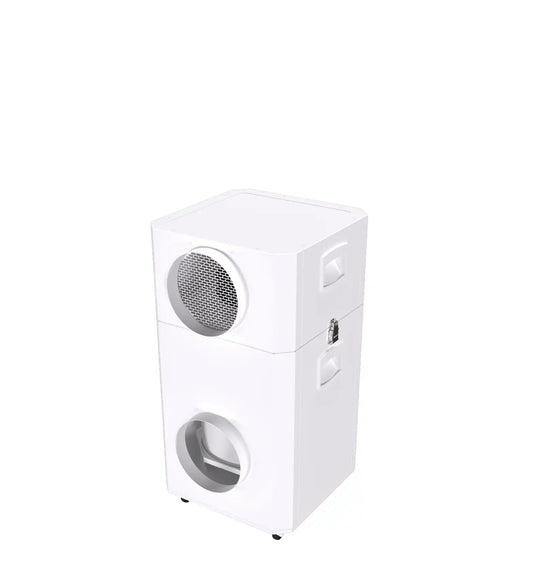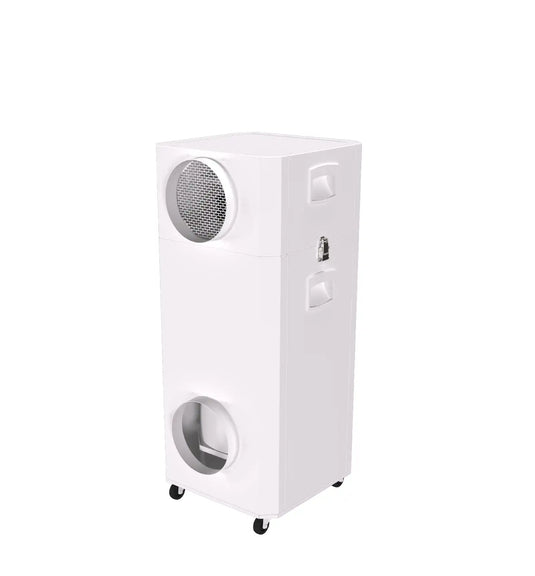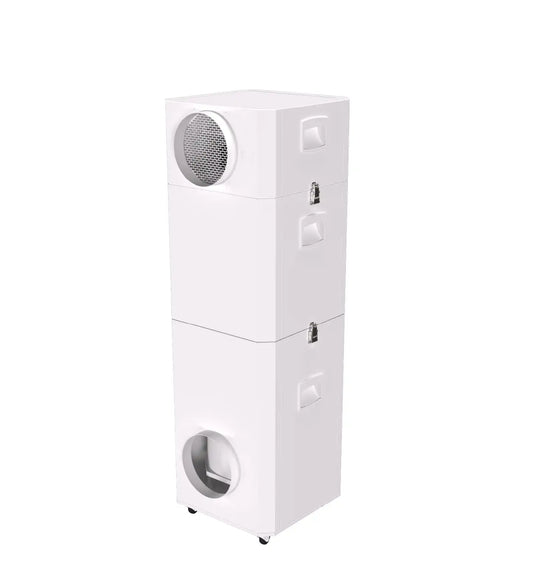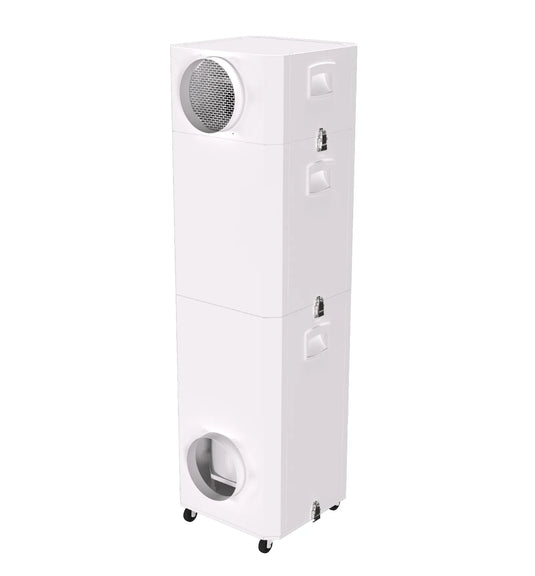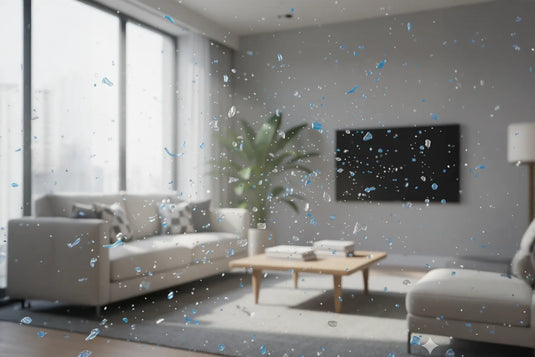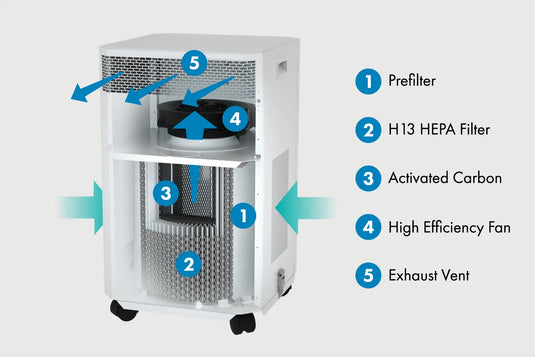Carpeted vs. Non-Carpeted Offices: Which Has Better Air Quality?
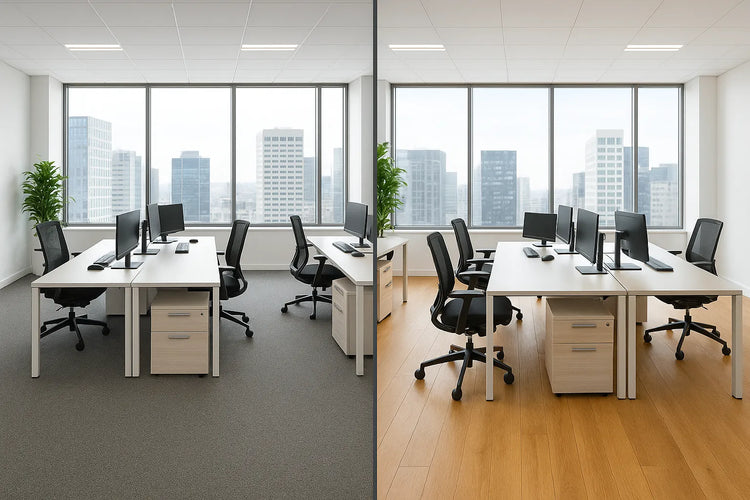
When you walk into an office, the flooring may not be the first thing you notice—but it can have a significant impact on the air you breathe. At INOVA Air Purifiers, we know that clean air is essential for productivity, health, and well-being. One factor that often goes overlooked is how different flooring types—carpeted vs. non-carpeted spaces—influence indoor air quality.
Let’s explore the differences and what it means for your office environment.
How Carpets Affect Office Air Quality
Carpets can feel warm and inviting, but they also act like a sponge for airborne particles.
- Dust and Allergen Trap: Carpet fibres capture dust, pollen, pet dander, and even bacteria. While this keeps them out of the immediate air, they can be easily disturbed and re-circulated whenever someone walks across the room.
- Resuspension of Pollutants: Studies show that fine particles, including PM2.5 (a major contributor to poor indoor air quality), can become airborne again when carpets are walked on or vacuumed with low-efficiency cleaners.
- Moisture Retention: Carpets are prone to holding dampness, which can lead to mould growth if not properly maintained—another trigger for respiratory issues.
- Chemical Concerns: Some carpets release volatile organic compounds (VOCs) or contain PFAS-based treatments that contribute to indoor air pollution.
In short, while carpets can help reduce noise and create comfort underfoot, they tend to harbour pollutants that compromise office air quality—especially without frequent deep cleaning and high-efficiency vacuuming.
How Hard Flooring Impacts Air Quality
Non-carpeted flooring—such as tile, vinyl, laminate, or hardwood—offers a different set of advantages.
- Easier to Clean: Dust and debris remain on the surface, making it much easier to remove with mopping or HEPA-filter vacuuming.
- Fewer Allergen Reservoirs: Unlike carpet fibres, hard floors don’t provide a home for dust mites or mould spores.
- Consistent Air Quality: With no fibres to trap and release particles, pollutants are less likely to be reintroduced into the air during daily use.
While hard flooring may not offer the same acoustic comfort as carpet, it contributes to a cleaner and more breathable office environment.
The Role of Air Purification in Both Settings
Whether your office is carpeted or not, pollutants are inevitable—from dust and allergens to VOCs from office equipment and furniture. That’s where an INOVA Air Purifier makes a difference.
In carpeted offices, an air purifier helps capture the fine dust, allergens, and airborne particles that are released when people move around.
In non-carpeted offices, it adds an extra layer of defence, capturing pollutants that cleaning may miss and filtering gases like VOCs.
With medical-grade HEPA filtration and activated carbon options, INOVA systems are designed to continuously deliver cleaner, healthier air—no matter the flooring.
Choosing the Healthier Office Environment
If your office is looking to improve indoor air quality, here’s a simple takeaway:
Hard flooring is generally better for air quality, as it reduces dust reservoirs and makes cleaning more effective.
Carpeted offices require extra care, including regular deep cleaning, the use of HEPA vacuums, and high-quality air purification to counteract resuspended pollutants.
At the end of the day, whether your workplace favours the comfort of carpet or the clean look of hard flooring, an INOVA Air Purifier ensures that your team can breathe easier and stay focused on what matters most - getting the job done.
✅ Interested in cleaner office air? Explore our range of INOVA Air Purifiers and find the perfect solution for your workspace.

